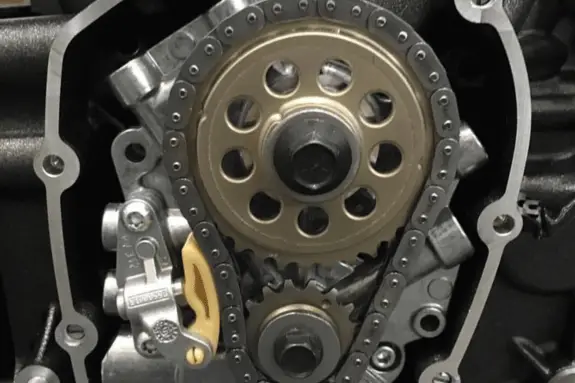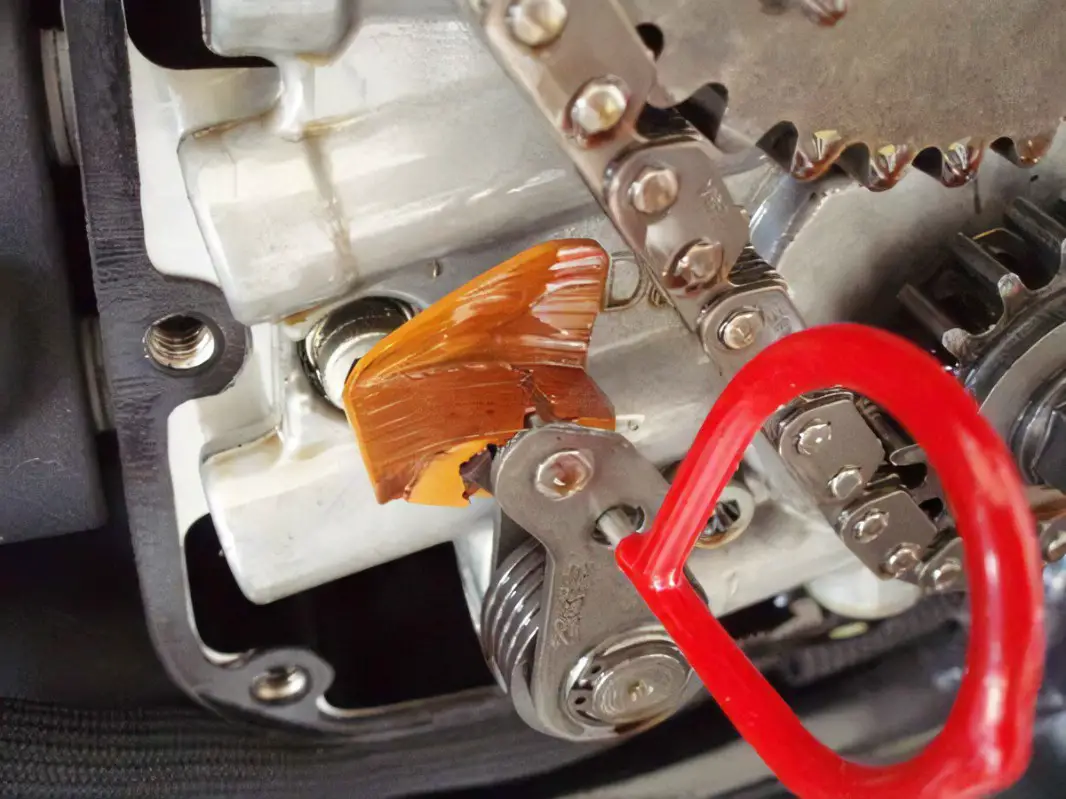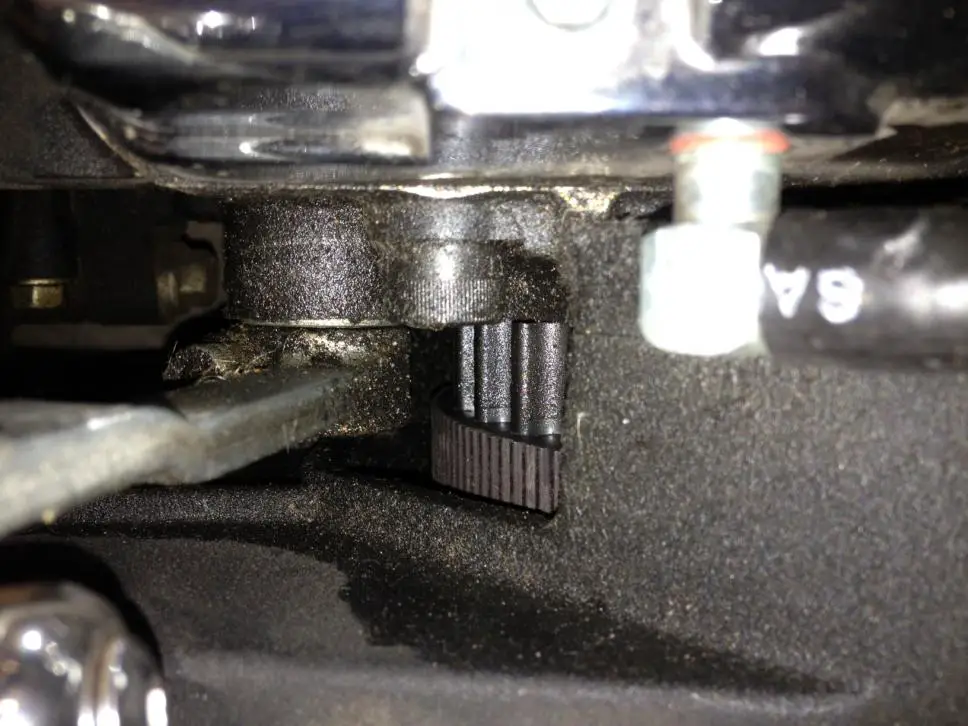For decades, Harley Davidson’s Twin Cam engine has been a symbol of power and performance in the motorcycle world. However, no manufacturer is exempt from occasional technical hiccups, and Harley Davidson is no exception. This powerhouse engine has indeed faced its fair share of issues over the years, particularly with certain models.
In this comprehensive guide, we’ll delve deep into the world of Harley Davidson Twin Cam engines, unearthing the most common problems, their causes, and potential solutions. From the infamous cam chain tensioner problem to other lesser-known issues, we’re going to lay it all bare. By the end of this article, you’ll have a thorough understanding of these engines’ strengths and weaknesses, along with the knowledge needed to address any problems that might arise.
So keep reading and let’s get to it!

Understanding the Harley Twin Cam: Years and Models
The Twin Cam engine made its debut in Harley Davidson motorcycles in 1999. Over the years, it has been incorporated into numerous models, becoming the beating heart of some of the company’s most iconic bikes.
The Twin Cam engine family includes variants such as the Twin Cam 88, 96, 103, and 110. These numbers refer to the engine’s displacement in cubic inches. Each of these models, while sharing the same core design, has unique characteristics and, consequently, different sets of potential issues. It’s important to note that the cam chain tensioner system problem years are spread throughout the model line and can pop up at the worst time possible. Keep reading, you’ll see why.
[Exhaustive List of Harley Years to Avoid]
Common Harley Twin Cam Problems
Now that we’ve set the stage, let’s delve into the nitty-gritty of the most common problems that plague the Harley Davidson Twin Cam engine.
Related: Best Spark Plugs for Harley Davidson Twin Cam: Full Guide
The Harley Cam Chain Tensioner Problem: Years Affected
The cam chain tensioner problem is arguably the most infamous issue associated with early Twin Cam years, specifically those produced between 1999 and 2006.
This issue primarily stems from the cam chain system’s design, which utilizes plastic shoes that ride on the cam chains. Over time, the constant friction and contact between the shoes cause wear and tear, which can eventually lead to the shoes wearing out.
This problem can have serious ramifications for the cam system along with the overall health of the engine. For instance, worn-out tensioner shoes can lead to metal-to-metal contact, which in turn can result in metal shavings clogging up the engine and causing catastrophic engine failure.
Related article: Harley Breather Bypass

Harley Davidson Cam Tensioner Recall: What You Need to Know
Despite the gravity of the situation, Harley Davidson has not issued a formal recall for the cam tensioner problem. Instead, they introduced a new hydraulic tensioning system in 2007 to address the issue. However, this new system isn’t a foolproof solution, as it has its own share of problems.
Related:
> Is The Twin Cam 88 A Good Motor? Yes and No (Here’s Why)
> Is The Twin Cam 96 A Good Motor? Yes and No (Here’s Why)
> Twin Cam 88 vs 96: Dual Cam Shootout (What’s Better?)
What Year Did Harley Change to Hydraulic Cam Chain Tensioners?
In an attempt to remedy the chain tensioner problems, Harley Davidson switched to a hydraulic tensioning system in 2007. This new system was designed to improve the longevity and reliability of the chain tensioners, but it’s worth mentioning that it still has its potential issues even when compared to the spring loaded cam tensioner. Also keep in mind that the Harley Davidson twin cam motor has been improved over the years, there are absolutely twin cam years you should avoid.
Related articles:
> Harley Twin Cam Years to Avoid
> Best Year Harley Twin Cam Engine
How to Tell If Cam Chain Tensioner Is Bad on Your Harley

Identifying a problematic cam chain tensioner can be a bit tricky, especially for those not well-versed in engine mechanics. However, there are some tell-tale signs to look out for. Unusual noises from the engine, particularly a rattling or grinding sound, can be indicative of an oncoming camshaft chain tensioner failure. Additionally, a sudden loss of power or performance could also point towards a potential tensioner issue. This is typically accompanied by a drop in oil pressure as the oil pump is starved of oil, due to being clogged by plastic remnants from the plastic cam chain tensioner system.
Related article: What Is High Mileage For A Harley Davidson?
[su_youtube_advanced url=”https://www.youtube.com/watch?v=oSmp_mw_ZbM”]
Hey you! Keep your Harley Davidson running in tip top shape with these suggestions:

Solutions and Fixes for Harley Davidson Cam Tensioner Problems
While the cam chain tensioner issue can seem daunting, there are a number of solutions and fixes available to Harley owners. One of the most popular solutions is to convert the stock cam chain assembly to the hydraulic tensioner system introduced by Harley in 2007.
However, this fix isn’t perfect, and some riders opt to replace the entire cam chain assembly with compatible aftermarket replacements. Investing in better quality engine oil can also help delay the wear and tear of the tensioner shoes, although this is more of a preventive measure than a fix.
Other Twin Cam Engine Problems
Besides the chain tensioner issue, several other potential problems can affect the Harley Davidson Twin Cam engine. For instance, the engines produced between 2003 and 2006 are known to have issues with high crank runout, which can lead to significant engine damage. Oil leaks are another problem that can plague Twin Cam engines, often due to worn seals and gaskets.
Now, let’s get into more detail.
Read next: Harley EITMS Problems
Transmission Problems in Harley Twin Cam Engines: Causes, Symptoms, and Solutions
These problems can stem from a variety of causes, such as worn-out clutch plates, faulty transmission gears, or inadequate lubrication.
Symptoms of transmission problems in a Harley Twin Cam engine include difficulty shifting gears, abnormal noise during gear changes or even slipping out of gear. If you experience any of these symptoms, it’s crucial to perform a thorough diagnosis.
This might involve inspecting the clutch and transmission components for wear and tear, checking the transmission fluid for adequate levels and quality, and testing the motorcycle’s performance during gear changes.
To resolve transmission issues, it’s often necessary to repair or replace faulty components. Regular maintenance, including timely oil changes and using high-quality transmission fluids, can help prevent future transmission problems.
The Impact of Carbon Deposit Build-Up in Harley Twin Cam Engines
Carbon deposit build-up is another common issue that can affect the performance of Harley Davidson’s Twin Cam engines.
Over time, carbon deposits can accumulate on the engine’s internal components. These deposits are often a by-product of combustion and can be exacerbated by factors such as poor fuel quality or infrequent oil changes.
Carbon deposit build-up can lead to a range of problems, such as decreased power, poor fuel efficiency, or even engine overheating. To identify these issues, you might notice a reduction in your motorcycle’s performance or an increase in fuel consumption.
Addressing carbon deposit build-up involves regular maintenance and using appropriate fuel additives. Regular oil changes, for example, can help reduce the buildup of carbon deposits. Additionally, using fuel additives designed to clean the engine can help remove existing deposits.
Keep reading: Harley 96 vs 103
[su_youtube_advanced url=”https://www.youtube.com/watch?v=qZNZAiX9Edw&t”]
Compensator Problems in Harley Twin Cam Engines
The compensator plays a vital role in Harley’s Twin Cam engines, helping to smooth out the transfer of power from the engine to the transmission. However, the compensator is also prone to wear and tear, leading to common twin cam problems.

Signs of compensator problems include excessive noise or abnormal vibrations when the motorcycle is running. These issues can stem from a range of causes, such as worn-out compensator components or inadequate lubrication.
To address compensator problems, it’s often necessary to repair or replace the faulty compensator. Regular inspection and timely maintenance can help prolong the compensator’s lifespan and prevent future issues.
Dealing with Frequent Oil Leaks in Harley Twin Cam Engines
Oil leaks are a common issue in Harley’s Twin Cam models, often due to worn-out seals or gaskets. Symptoms of oil leaks include visible oil spots under the motorcycle or a noticeably lower oil level.

To identify the source of an oil leak, it’s necessary to inspect the engine and transmission for signs of oil leakage. This might involve checking the oil pan, oil lines, and seals for any signs of damage.
Addressing oil leaks often involves replacing the faulty seals or gaskets. Regular inspection and timely replacement of these components can help prevent future oil leaks.
Conclusion: Navigating Harley Twin Cam Problems
While the Twin Cam engine is an iconic piece of Harley Davidson’s legacy, it’s not without its flaws. The chain tensioner problem, along with a handful of other potential issues, can be a headache for riders. However, with a good understanding of these problems and their solutions, you can navigate these issues with relative ease.
Remember, the key to a long-lasting and reliable engine is regular maintenance and prompt attention to any issues that arise. With proper care and vigilance, your Twin Cam engine can provide you with many miles of exhilarating riding.
Read next:
> Twin Cam vs Milwaukee 8
> Harley’s Twin Cam vs Evo: Who Reigns Supreme? (Revealed)